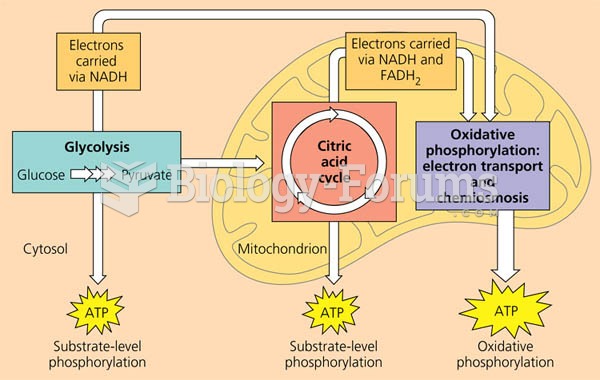Answer to Question 1
To meet your body's increased oxygen needs during aerobic exercise, your heart must pump oxygen-rich blood to muscles at a faster pace than normal. This increased demand on the heart makes the heart stronger and increases its endurance. In addition, aerobic exercise improves the endurance of the lungs and the muscles along the arteries and in the walls of the digestive tract and, of course, the muscles directly involved in the activity. These all-over improvements are called cardiovascular conditioning or the training effect.
Delivery of Oxygen by the Heart and Lungs to the Muscles
The more fit a muscle is, the more oxygen it draws from the blood. That oxygen is drawn from the lungs, so the person with more fit muscles extracts more oxygen from the inhaled air than a person with less fit muscles. The cardiovascular system responds to the demand for oxygen by building up its capacity to deliver oxygen. Researchers can measure cardiovascular fitness by measuring the amount of oxygen a person consumes per minute while working out, a measure called VO2 max.
1 . The lungs deliver oxygen to the blood.
2 . The circulatory system carries the oxygenated blood around the body.
3 . The muscles and other tissues remove oxygen from the blood and release carbon dioxide into it.
4 . The blood carries the carbon dioxide back to the lungs.
5 . The lungs remove carbon dioxide, making the blood ready to be reloaded with oxygen.
Answer to Question 2
There are many factors to consider when choosing a sports drink. The ideal beverage should leave the digestive tract rapidly and enter circulation, where it is needed. Carbohydrate solutions don't all empty from the stomach at the same rate. The drink should contain at least 4 percent but no more than 8 percent carbohydrate by volume. Drinks containing more than 10 percent carbohydrate, such as sodas, fruit juice, Kool-Aid types of drinks, and some sports drinks, take longer to absorb. Some can cause cramps, nausea, bloating, and diarrhea. Drinks with less than 4 percent carbohydrate may not offer an endurance-enhancing effect. Drinks using a blend of glucose polymers - short chains of carbohydrate - and fructose leave the stomach at the same rate as water, speeding the availability of the carbohydrate and water to working muscles.







